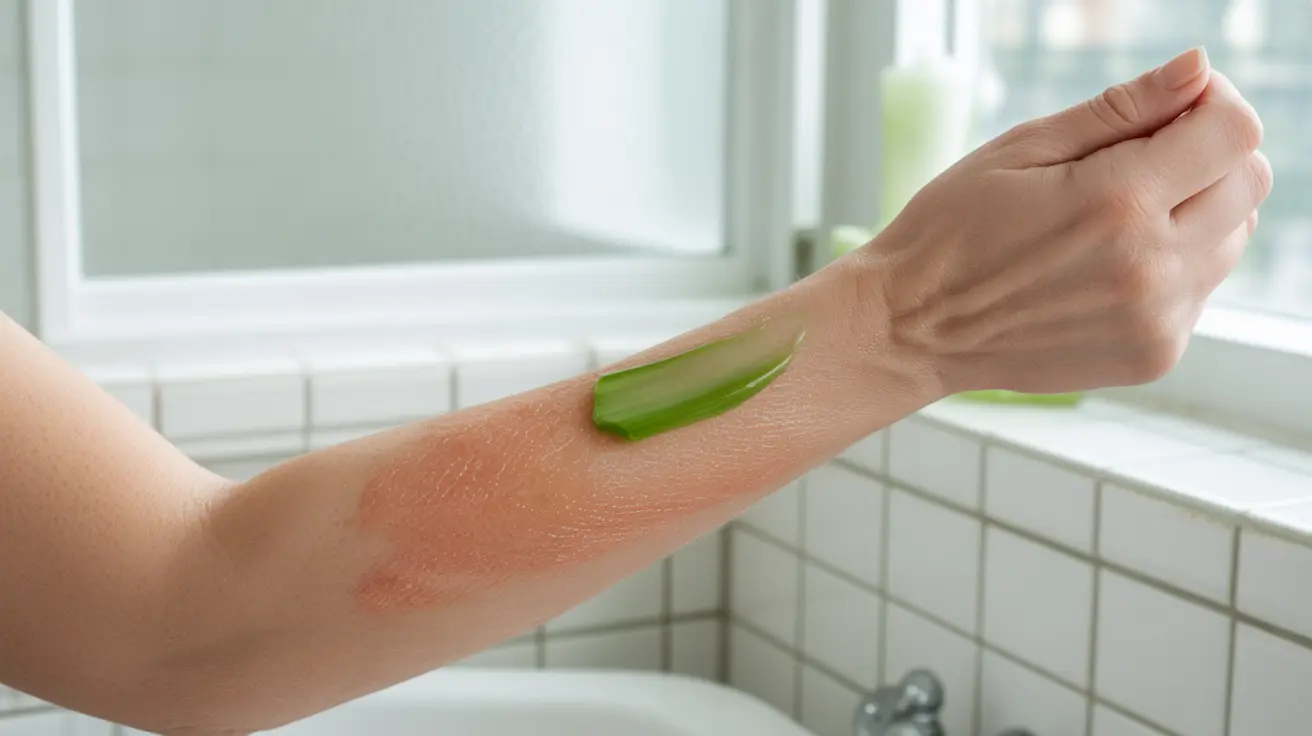Getting sunburned can turn a great day outdoors into an uncomfortable experience, but effective relief is possible with the right home remedies. Understanding how to properly treat sunburn at home can help ease discomfort, promote healing, and prevent further skin damage while your body recovers.
This comprehensive guide explores proven home remedies for sunburn relief, helping you identify when self-care is appropriate and when you should seek medical attention. We'll also discuss prevention strategies to protect your skin from harmful UV radiation in the future.
Immediate Relief Strategies for Sunburn
When you first notice sunburn, taking quick action can help minimize discomfort and support healing:
- Cool the skin with a cold compress
- Take a cool (not cold) shower or bath
- Stay hydrated by drinking plenty of water
- Take over-the-counter pain relievers if needed
- Get out of the sun immediately
Natural Cooling Solutions
Several natural remedies can provide cooling relief for sunburned skin:
- Cold cucumber slices
- Chilled green tea compresses
- Cool milk compresses
- Refrigerated plain yogurt applications
- Cold water-soaked towels
Effective Natural Ingredients for Sunburn Treatment
Aloe Vera Applications
Aloe vera is one of nature's most effective remedies for sunburn relief. Use pure aloe vera gel directly from the plant or choose a high-quality commercial product without added fragrances or alcohol. Apply gently to the affected area several times daily.
Soothing Oatmeal Treatments
Colloidal oatmeal can significantly reduce inflammation and itching associated with sunburn. Add finely ground oatmeal to a lukewarm bath or create a paste with water for localized application.
Chamomile Solutions
Brew strong chamomile tea, allow it to cool, and apply it to the affected areas using a soft cloth or spray bottle. The anti-inflammatory properties can help reduce redness and discomfort.
What to Avoid with Sunburned Skin
Certain substances and activities can worsen sunburn and delay healing:
- Harsh soaps and cleansers
- Hot showers or baths
- Petroleum-based products
- Scented lotions or creams
- Tight clothing
- Additional sun exposure
Signs You Need Medical Attention
While most mild sunburns can be treated at home, certain symptoms require professional medical care:
- Severe blistering
- Fever or chills
- Extreme pain
- Headache and confusion
- Signs of dehydration
- Extensive skin damage
Prevention Strategies
The best treatment for sunburn is prevention. Protect your skin by:
- Using broad-spectrum sunscreen (SPF 30 or higher)
- Reapplying sunscreen every 2 hours
- Wearing protective clothing
- Seeking shade during peak UV hours
- Using UV-protective accessories
Frequently Asked Questions
What are the best home remedies to soothe and heal mild sunburn at home?
The most effective home remedies include applying cool compresses, using pure aloe vera gel, taking cool baths with colloidal oatmeal, and staying well-hydrated. Over-the-counter pain relievers can also help manage discomfort.
How can I safely use aloe vera and natural ingredients like oatmeal or chamomile for sunburn relief?
Apply pure aloe vera gel directly to clean skin 2-3 times daily. For oatmeal, create a bath with colloidal oatmeal or make a paste with water. Brew chamomile tea, let it cool, and apply with a soft cloth or spray bottle.
What should I avoid applying to sunburned skin to prevent further irritation or damage?
Avoid products containing alcohol, petroleum, or fragrances. Don't use harsh soaps, butter, or oils, which can trap heat and worsen the burn. Skip any exfoliating products until the skin has fully healed.
When is sunburn severe enough to require medical attention instead of home treatment?
Seek medical attention if you experience severe blistering, fever, extreme pain, headache with confusion, signs of dehydration, or if the burn covers a large portion of your body.
How can I prevent sunburn and protect my skin from harmful UV exposure?
Use broad-spectrum sunscreen with SPF 30 or higher, reapply every 2 hours or after swimming/sweating, wear protective clothing, seek shade between 10 AM and 4 PM, and use accessories like wide-brimmed hats and sunglasses.




